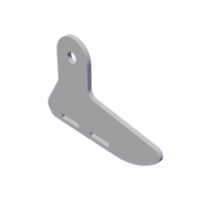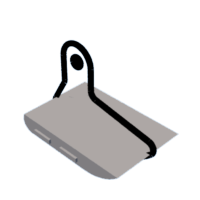Introduction: Lower Body Exoskeleton
A robotic exoskeleton is a mechanical device worn by a human being for certain purposes or applications. An exoskeleton is generally considered to be a hard mechanical frame with joints that allow movement of the human operator.
There are other types of exoskeletons that are softer and are worn on the body, supported by the internal skeleton of the human being. In this way, the forces of the attached actuators can be transferred to the body. By type, it can be said that frames of this class can be anthropomorphic or pseudo-anthropomorphic, depending on the degree of resemblance they have to the human body.
Robotic gait rehabilitation appeared 25 years ago as an alternative to conventional manual gait training. Compared with conventional therapy, robotic gait rehabilitation can deliver highly controlled, repetitive and intensive training in an engaging environment, reduce the physical burden for the therapist, and provide objective and quantitative assessments of the patients’ progression. The use of gait rehabilitation robots began in 1994 with the development of Lokomat.
Wearable exoskeletons are emerging as revolutionary devices for gait rehabilitation due to both the active participation required from the user, which promotes physical activity, and the possibility of being used as an assistive device in the community. The number of studies on wearable exoskeletons during the past 10 years have seen a rapid increase, following the general tendency now towards rehabilitation robots. Some of these devices already have FDA approval and/or CE mark, and are commercially available, whereas many others are still under development.
Key Words: exoskeleton, limbs, lower body, gait, legs
References:
[1] I. Corporate, “What are exoskeletons - Iberdrola,” Iberdrola. https://www.iberdrola.com/innovation/what-are-exoskeletons
[2] A. Rodríguez-Fernández, J. Lobo-Prat, and J. M. Font-Llagunes, “Systematic review on wearable lower-limb exoskeletons for gait training in neuromuscular impairments,” Journal of Neuroengineering and Rehabilitation, vol. 18, no. 1, Feb. 2021, doi: 10.1186/s12984-021-00815-5.
[3] RoMeLa, “SAFFIR/THOR Prototype Lower body - Compliant Terrain walking,” YouTube. Sep. 20, 2013. [Online]. Available: https://www.youtube.com/watch?v=bKNSv2h35YE
Supplies
1X MDF board
Laser cutting Machine
4X Servomotor Tower Pro MG995
8X Screws
Creality Ender 3S-1
PLA
Arduino UNO
Protoboard
Batteries
Cables
Motor driver module L298N
Step 1: Draft & Design
We drafted our ideas for the structure based on the height measure of 30cm and inspired in the anatomy of human legs. Thinking of the movement that pieces have to replicate according to each respective joint.
Step 2: Design the Pieces Using SolidWorks
Using SolidWorks, we first designed the pieces of the legs that imitate the Femur and Fibula and Tibia. Once we got that, we added a two parted leg supported by mid-plates to create a more stable structure. Then, we created a design for the parts that imitate the hip bones where the electronic components would be located. Finally, we designed the feet to facilitate gait movement and to have a better balance.
Attachments
Step 3: Assembly the Pieces
Once we had all the pieces designed, we built up the assembly to show and visualize the whole exoskeleton structure. Every design was made thinking in the final assembly so each piece is perfectly accommodated to fit with other pieces. With this assembly we are able to predict the mechanical behavior and also, we can clearly see the dimensions of the exoskeleton.
Step 4: Programming and Electronics
Four servo motors were added to the assembly to imitate the flexion and extension of hips and knees. Circuit is composed of the 4 motors, an Arduino UNO, a light switched power source, and all connected through a protoboard mini.
The written code is designed to imitate the "perfect" human gait, resembling the angles that legs go through when a person walks. Reminding that this type of motor has a limited range to 180°, make sure to calibrate them before using and assembling them.
Make sure to use a power source strong enough to power the four motors.
Step 5: Authors & Professors
Guzmán Hernández Manuel (cuarto semestre en Ingeniería Biomédica), Mérida Vázquez Maximiliano (cuarto semestre en Ingeniería Biomédica), Villavicencio Vázquez Luis Javier (cuarto semestre en Ingeniería Biomédica), Girón Nieto Huber (profesor asesor), Moreno Hernández Ana (profesora titular).

















![Tim's Mechanical Spider Leg [LU9685-20CU]](https://content.instructables.com/FFB/5R4I/LVKZ6G6R/FFB5R4ILVKZ6G6R.png?auto=webp&crop=1.2%3A1&frame=1&width=306)




